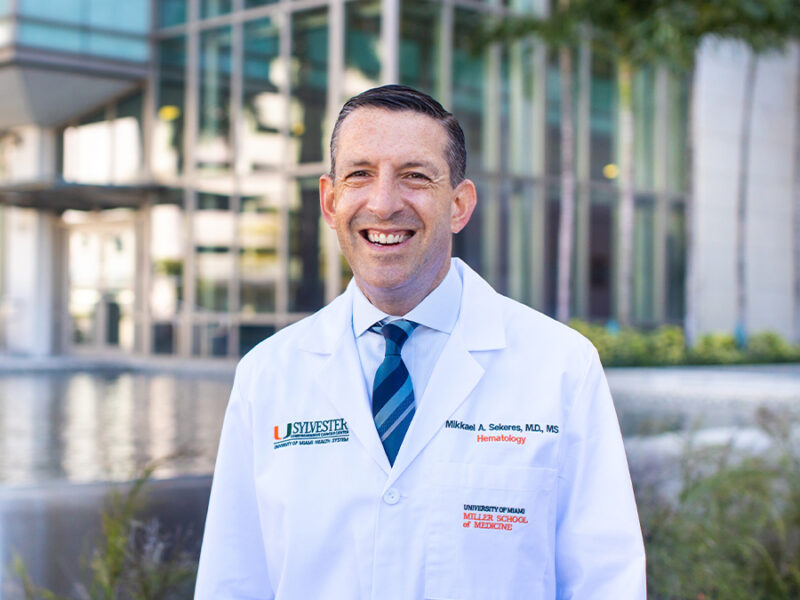Recently approved drugs are rapidly changing the treatment of patients with acute myeloid leukemia (AML), with newer options including less toxic front-line therapies and several targeted drugs. These new drug combinations and targeted therapies may offer a brighter future – especially among older patients and others who may be more frail.
Physician-scientists at Sylvester Comprehensive Cancer Center at the University of Miami Miller School of Medicine surveyed the field in an Aug. 8, review published in the peer-reviewed journal, Journal of the American Medical Association Oncology.
“It’s been an exciting time in the treatment of AML. The time was ripe for an update on the biology of AML and the treatment approaches that we’ve adopted since the approval of these drugs,” – said Mikkael Sekeres, Chief of the Division of Hematology at Sylvester, and senior author on the article.

About 20,800 people are diagnosed with AML annually in the U.S., with a median age of onset of 69. Only about a third of patients live five years or longer, according to National Cancer Institute data from 2014-2020.
Historically, a substantial fraction of patients were unable to tolerate the first-line, harsh combination of chemotherapy drugs. Many frailer, typically older patients often did not receive any active therapy.
The approval of the drug venetoclax in 2020, and similar drugs after that, enabled physicians to offer such patients a less harsh option. Venetoclax targets a molecule involved in cell death, promoting cell apoptosis. It is typically combined with the older chemotherapy drug azacitidine.
Patients generally better tolerate the azacitidine-venetoclax combination than traditional chemotherapy and often stay on it for the rest of their lives.
“Since we’ve introduced this combination, more patients are getting treated, more patients are getting treated as outpatients closer to their homes, and the people who are being treated are living longer,” – said Sekeres.
Patients have also benefitted from targeted therapies that aim to target different mutations often found in AML, including in genes called FLT3, IDH1, and IDH2.
The first molecularly targeted drug, midostaurin, was approved to treat AML patients with FLT3 mutations in 2017. Since then, several others have been added to the mix.
Midostaurin and another FLT3 inhibitor, quizartinib, are used as part of initial, front-line treatment in eligible patients, typically combined with conventional chemotherapy agents.
Other newer drugs are approved for patients who do not respond to first-line therapy or become resistant to it, including several drugs that target IDH1 and IDH2.
“The future is bright for targeted therapies,” – said Sangeetha Venugopal, Sylvester physician-researcher, the article’s first author.

Other posts featuring Sylvester Comprehensive Cancer Center.


